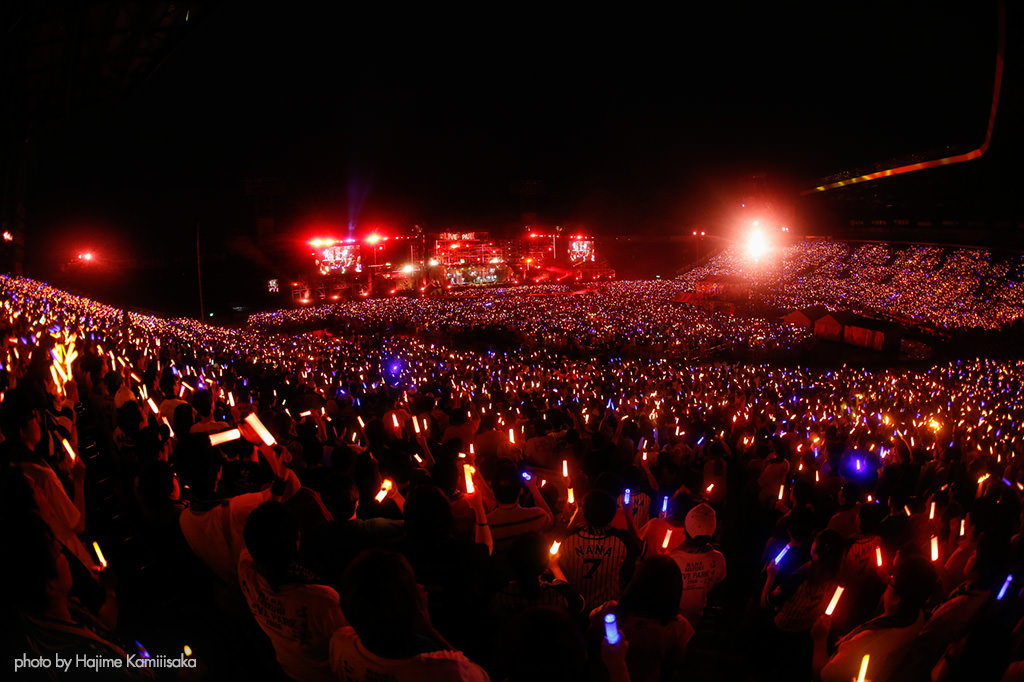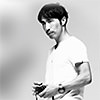Pro Tips for Live Concert Photography (2): 3 Tips for Getting the Best Shots
The techniques you learnt for standard photography don’t necessarily apply for live concert photography. Speaking from a wealth of experience, live concert and celebrity photographer Hajime Kamiiisaka shares with us some tricks to getting the best shots during live concerts, in terms of camera settings, AF and timing. (Reported by: Hajime Kamiiisaka)

f/3.2, 1/250 sec., ISO 3200
Tip 1: Camera settings to use for live concert settings
Let me start by introducing the specific settings required during a live concert shoot. These settings involve the same three used in standard photography: shutter speed, aperture, and ISO speed.
As explained previously in Part 1, the most important setting is the shutter speed. Because most live venues are dark, a speed of 1/125 sec. or quicker is required in order to "freeze" the artist in action. Furthermore, in many cases, when taking into account the balance between ISO speed and noise (see Part 1 for more information on ISO speeds for live concert photography), an aperture in the range of f/4-5.6 should be sufficient.
For more about how shutter speed and aperture determines exposure, check out:
How Exposure Works
For shooting mode, I personally prefer to use manual exposure with Shutter-priority but other modes should be fine as well. There are professional photographers who use an assortment of other modes when shooting. However, because you want to be able to control the shutter speed in such cases, avoid using Auto mode as the camera determines all of the settings.


A good idea is to use Shurtape to keep the mode dial or switches in place so that they will not shift during the shoot.
Furthermore, it is common for other people to bump into you during a live concert shoot, which might cause the switches and dials that you have set up especially for the shoot to shift unintentionally. To avoid that, I use Shurtape* to secure the AF and MF switches or shooting mode switch in position.
* Shurtape: Adhesive tape made of paper and a high quality adhesive. It can be cut and applied with ease, and does not leave marks when the tape is repositioned, and has long-lasting adhesive strength.
Point 2: Use Single-point AF to focus on the target position

f/4.5, 1/400 sec., ISO 1600
The scene can change at a dizzying rate. It is important to respond quickly to the photo opportunities in such situations as it will not be possible to do a retake.
Next, let's look at how to use AF in live concert photography. I think that live concert photography is similar to documentary filming as the scene can change rapidly, and it is not possible to do a retake. You never know when a photo opportunity might arise, so your results will vary depending on how well you can react immediately to the scene.
With the high performance AF found on recent cameras, there is a high chance that your images will be in focus when you press the shutter button in standard photography. However, in live concert photography, the microphone may be in the way of the artist's face, or people in front of you may be blocking your view, so there will be cases when your shots will be out of focus if you let the camera control it. To overcome this problem, you can rely on the Single-point AF (Manual selection) feature.

f/4, 1/400 sec., ISO 500
An image of the AF points on the EOS 750D. If you are able to move the single AF point as intended, you will be able to take live concert photos close to what you had in mind.
Cameras such as the EOS 5D Mark III (61-point), EOS 80D (45-point), and EOS 750D (19-point) are equipped with a large number of AF points. Although the number of AF points differs between different models, all models are equipped with Single-point AF that allows you to select a single focus point.
If you are able to move the single AF point to your intended position, you will be able to take photos that are close to what you had in mind and that are not affected by the people or objects in front of you that may be blocking your view. Furthermore, you cannot afford to look away from the artist’s movements, so it is important to be able to switch the AF point while looking through the viewfinder without having to look at what you are doing. Hence, a good idea would be to customise your buttons so that you can quickly switch the AF point as necessary.
Point 3: The timing of your shots is critical
When the live concert starts, try aiming for scenes that are close to what you have in mind. When you get up close to the stage, don't forget to be aware of the facial expressions and instruments when getting the right angle to capture great shots of artists (See Part 1).
Also, the timing is important when you’re positioned far from the stage or when you’re shooting from the back of the venue. Even when you can only take shots in which the artists appear tiny onstage, it is a moment that is captured in pictures. When you place the crowd together with the stage in your shots, aim for moments when the crowd is excited so that you can capture the atmosphere of the venue.

f/10, 1/200 sec., ISO 3200
Even when you can only take shots of the stage from afar, the timing is important. Aim for the climax of the performance or moments when the crowd is excited.
Take care not to include too many dark areas such as the shadows of the crowd and the walls because it tends to make photos lose their impact. Aim for the best timing while keeping in mind basic composition techniques such as Triangular Composition and Rule of Thirds Composition.
For more information on composition, see the following articles:
[Part 2] Composition Basics! “Main Theme & Sub-theme” and “Triangular Composition”
[Part 4] Composition Basics! “Diagonal Composition” and “Rule of Thirds Composition”
Summary: Taking that one shot that you had in mind
Once a live concert starts, it is non-stop, so all you can do is aim for scenes that are close to what you had in mind. Therefore, getting ready and setting up your equipment is everything. Always bring along spare batteries and memory cards, and have replacement lenses on hand. A live concert is a once-in-a-lifetime encounter, so you will not be able to capture the same scene again.
Most professional photographers will of course have spare cameras on hand, with one fitted with a wide angle lens and another with a telephoto lens, and make use of multiple cameras during the shoot. That is because there is no time to replace lenses, and it also helps to prevent dust from getting into your camera. As for myself, I use four cameras so that I can get my best shot.
With advance preparation, disaster can be avoided. By learning from how professional photographers pay attention to ensuring smooth camera operations and how they can flexibly handle any situation that arises, you too can capture great live concert photos.

Kamiiisaka even pays attention to his clothing. He wears dark clothing for his shoots so that it does not distract from the crowd or artists.
Receive the latest updates on photography news, tips and tricks by signing up with us!

Entered Epic/Sony Records in 1993, joining the design production division after gaining experience as a promoter and in A&R. Left in 2002 to become an assistant to fashion photographer JFKK, before striking out to take on photography assignments on his own. Since then, he has been active mainly in the commercial fashion, film, music and visual arts scenes.

































